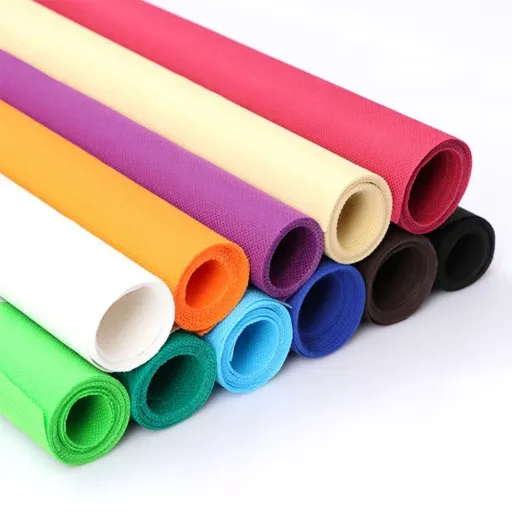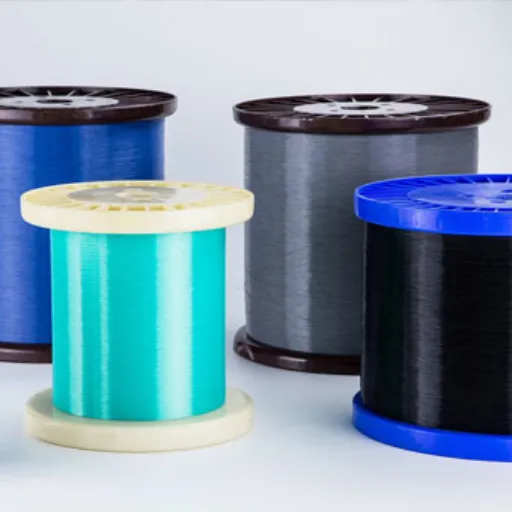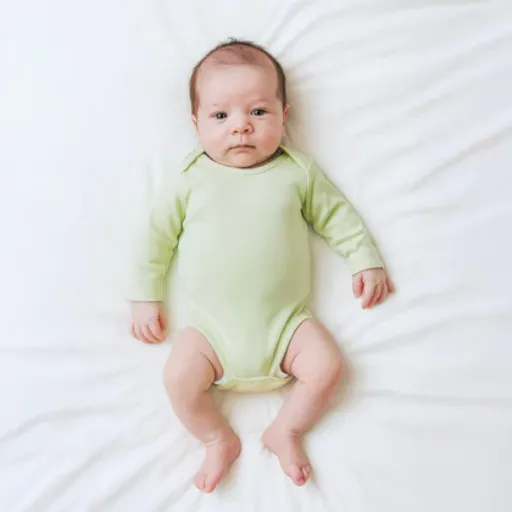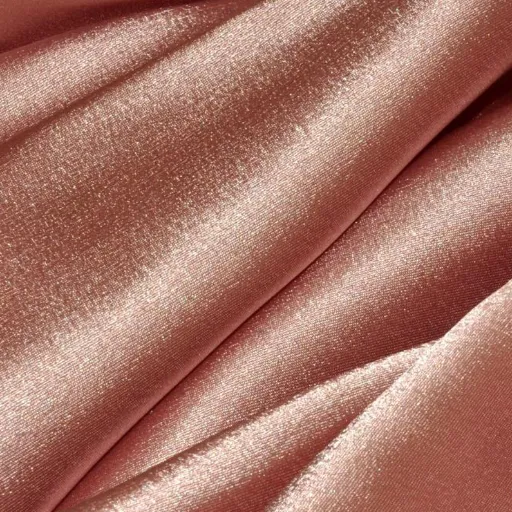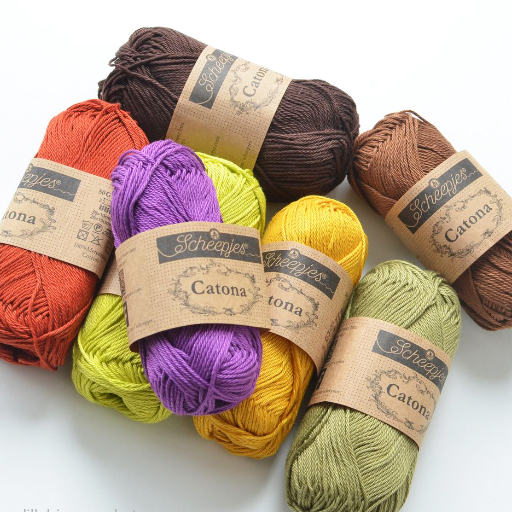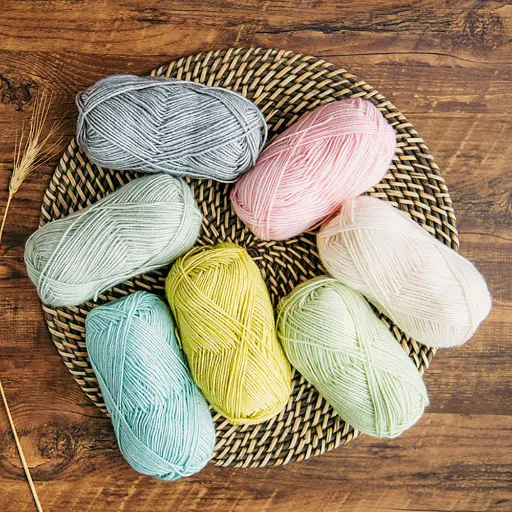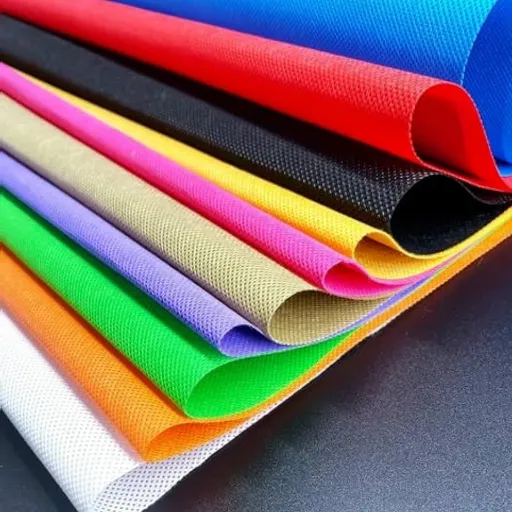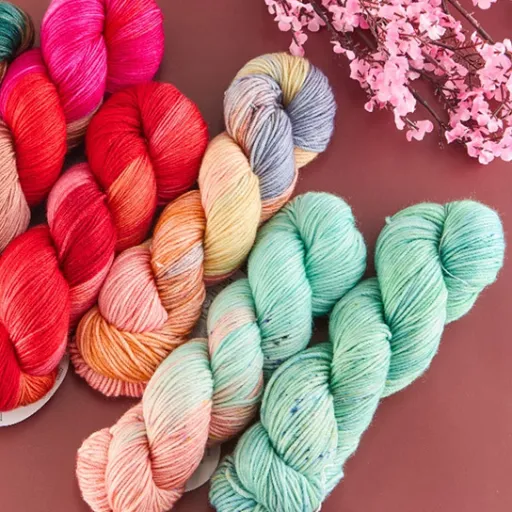Is this your first foray into crochet, and you are asking yourself what you can craft using acrylic yarn? Or maybe you are an advanced crocheter eager to keep up with all the trendy new accessories? Acrylic yarn boasts the charm of versatility and economy, pairing well with various types of projects and earning a spot as the most worthy contender for all kinds of crafters. This article will introduce you to beginner-level projects that are moderately simple yet immensely satisfying, and then to creative accessories that keep pace with current crochet trends. Whether you’re interested in making gifts, some snuggly home décor, or fashionable pieces for your own wardrobe, there is plenty of inspiration to get you started using acrylic yarn. The time has come to bring these ideas to life!
Why Acrylic Yarn is Great for Beginners

Being beginner-friendly, acrylic yarn is cheap, readily available, and manageable. The smooth texture of the yarn allows the stitches to glide smoothly, making it ideal for working basic stitches. It’s also durable and can be washed in a machine, so the projects stay long-lived with little upkeep. There are countless colors and weights of acrylic yarn from which to choose; if new crafters can experiment with this, they surely will grow their skills.
Easy to Work With and Forgiving of Mistakes
Acrylic yarn is ideal for beginners due to its forgiving nature when it comes to mistakes. If you are to unravel your project to correct an error—a process called “frogging”—acrylic yarn doesn’t get damaged or frayed and remains intact. Thus, it becomes much less intimidating for the beginner to enter into a crochet or knitting experience, as they can confidently try their stitches over and over without worrying about damaging the fiber. Moreover, its smooth texture and consistency allow beginners to clearly see their stitch patterns and identify errors, with every mistake becoming an opportunity to learn and improve.
Affordable for Practice Projects
For being relatively inexpensive, acrylic yarn is often referred to by the trade name “practice wool.” Future crafters can experiment with complete liberty, as cost is always a consideration when fine materials are at stake. Acting in accordance with current trends, people seem to be searching for acrylic yarn more frequently these days for beginner-friendly crafting. Such popularity speaks to its accessibility and practicality, considering crafters can usually obtain vast amounts of this material through local stores or online. I mention that its low cost comprises a massive factor in trial and error learning to perfect their technique, minimizing waste at the same time.
Project Ideas for Beginners
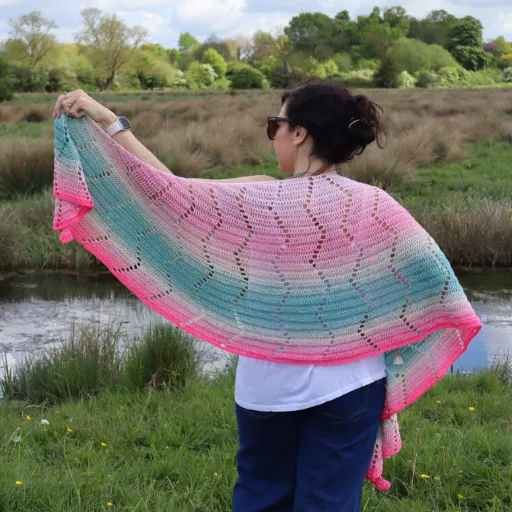
Scarf
A simplistic scarf is best taken as a very first project. It involves some fundamental stitches and provides you with a good practice in applying consistency to your tension.
Dishcloth or Washcloth
This tiny and swift make-anything project helps you master the basics while fulfilling some practical purpose.
Beanie or Hat
This simple beanie-for-beginners design introduces you to shaping techniques in an easygoing manner.
Coasters
Fun, fast, and a great way to experiment with textures and patterns, crocheted or knitted coasters are a great choice.
Simple Tote Bag
Creating a tote bag for a beginner is a perfect way to practice basic construction techniques while making a valuable item.
Simple Scarves to Learn Basic Stitches
Being among the most versatile beginner projects, a scarf is knitted or crocheted by students. A student can then concentrate on mastering the basic stitches, such as single crochet, double crochet, knit, and purl. Scarves also provide ample room for practicing consistent tension and experimenting with various yarns. They do not require any complex shaping or pattern adjustments, either. It’s excellent for confidence-building. So the simple scarf can be the first project to tie together some practical, stylish ideas along with some fundamental techniques that can later be applied in more advanced knitting or crochet projects.
Granny Squares for Skill Building
Granny squares are an excellent practice for improving crochet skills while producing versatile, multipurpose crochet pieces for decoration. These are small, square-shaped motifs generally worked in rounds with the simplest of stitches: chains, double crochets, and slip stitches. Such motifs help beginners practice stitch tension and hone their technique. As a bonus, one can use granny squares for endless creativity, varying color combinations, or testing new patterns. Over time, joining these squares together for everything from blankets to garments becomes a testament to your own skills and creativity. This combination of simplicity and adaptability makes granny squares a timeless favorite in the world of crochet.
Quick and Practical Dishcloths
The dishcloth is one of the fastest crochet projects to complete, making it ideal for both beginners and experienced crafters. They are a fantastic way to try out a new stitch or practice a technique because of their small size and practical usage. A dishcloth, crafted with sturdy yarn such as cotton using a simple pattern, is an eco-conscious choice that performs exceptionally well in cleaning tasks. The dyes and textures can be chosen freely to create genuinely custom dishcloths that are not only practical but are also pleasing to the eye in one’s kitchen.
Home Decor Ideas Using Acrylic Yarn
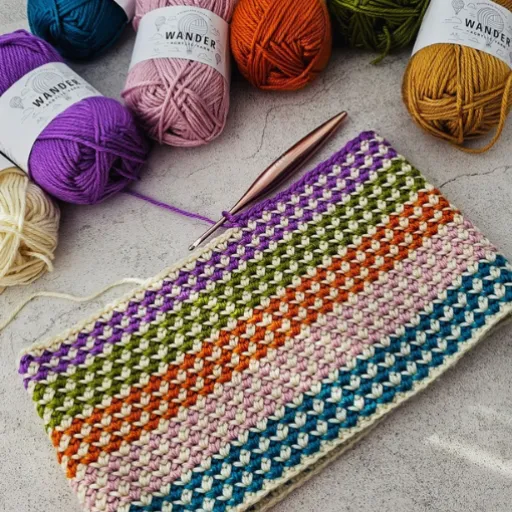
Acrylic yarn is a highly versatile and affordable material for creating stylish yet durable home decor items. The following are some possibilities:
- Throw Blankets: Knit or crochet warm, cozy throw blankets with acrylic yarn to add warmth and texture to your living space.
- Pillow Covers: Make brightly colored or patterned pillow covers to coordinate with your home’s decor.
- Wall Hangings: Macrame-style wall art or woven creations using acrylic yarn will enhance the beauty of any room.
- Storage Baskets: Crochet storage baskets are well-suited for organizing household items while maintaining a decorative look.
- Table Runners and Placemats: Create table runners or placemats with vibrant colors to complement your dining space.
Cozy Blankets from Simple Throws to Intricate Afghans
Acrylic yarn makes an excellent choice for warm and cozy blankets, whether simple throws or bewitchingly detailed afghans. Being soft, durable, and available in a wide range of colors, it is perfect for projects that keep you warm while serving as a decorative enhancement for your space. Beginners should consider working on sped-up projects with simple patterns such as garter stitch or granny squares. Meanwhile, experienced crafters can transition to textured cables or intricate lace patterns, from which beautiful afghans emerge. Considering properties like acrylic yarn, cost-effectiveness, and machine washability, make it very much a working yarn, exerting a mind of its own, as this-too-easy-wash-a-yarn is a delight! Thrown over a settee or layered upon a bed, these cozy blankets provide just the ambience for storing away soft memories.
Pillow Covers to Add Texture to Any Room
Pillow covers offer an instant style upgrade, typically adding texture and personality to any environment. From velvet and chunky knits to embroidery and geometrics, the sky is indeed the limit. The latest trend tilts towards neutrals made vibrant by accent colors, giving any interior a chic yet warm feel. Data from reputable search engines shows an alarming rise in searches for “textured pillow covers,” a clear indication of the popularity of these items in the realm of home decor. Changing pillow covers according to the seasons is a cheap and easy way to keep a home fresh, whether one is going for a modern, clutter-free look or something warm and layered.
Durable Rugs and Floor Mats for Customization
The key personal elements in a house are now rugs and mats. Many consumers are now searching for terms such as “washable area rugs” and “anti-slip mats,” indicating a growing demand for both practicality and aesthetic appeal in the home. Such pieces are twofold: they protect the floors while also serving to attract the eye further or integrate an area into a space. The trends can be bold, featuring prints or textures, but the best way to provide a house update while ensuring durability and ease of upkeep is with washable doormats or rugs that have simple designs.
Tips for Working with Acrylic Yarn
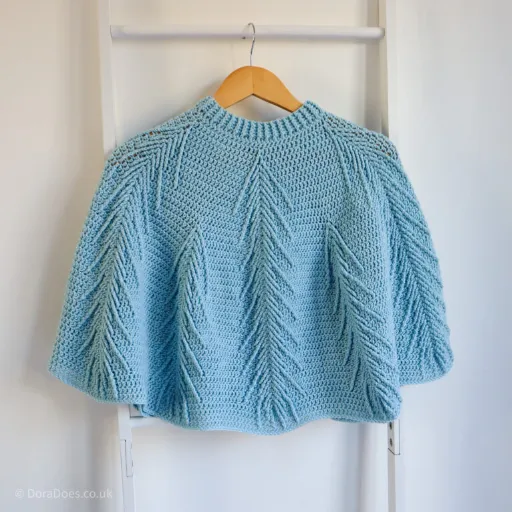
- Use the Right Tools: Use smooth knitting needles or crochet hooks to avoid the yarn catching. Usually, metal or plastic tools are preferable with acrylic yarn.
- Maintain Proper Tension: Since acrylic yarn tends to stretch, keep your working tension consistent to avoid uneven stitches.
- Care for Your Projects: Once finished, wash your project gently in cool or warm water. Although acrylic yarns can be machine-washed, they are sensitive to excessive heat. Always check the label for specific instructions.
- Avoid High Heat: Don’t apply heat from the iron or any other heating method to the acrylic yarn, as it can melt with excessive heat. If needed, use a steamer or apply gentle heat for occasional shaping.
- Control Static: Acrylic yarns do build up static. If this happens, moisten your hands a bit or use an anti-static spray.
Softening Techniques for a Softer Feel
If your acrylic yarn projects feel hard or rough, several methods exist to soften the article, rendering the creation more comfortable to wear or use. One of the most effective methods is to wash the finished project with a gentle fragrance-free fabric softener. Fill a basin with warm water, add a small amount of fabric softener, and let the item soak for 30 minutes. After washing, rinse the project thoroughly with cold water to remove the softener.
Another option is to use hair conditioner instead of a fabric softener. Apply a small amount of conditioner to the yarn, work it in gently, and rinse thoroughly to prevent buildup. For immediate results, some crafters even suggest placing the item in the dryer on low heat or no heat, accompanied by clean tennis balls to help keep it fluffed.
All these help the creation soften further, along with improving its texture and usability.
Avoiding Static While Crocheting
In the case of acrylic or synthetic yarns, static buildup is a nuisance in dry or cool environments. To reduce static while crocheting, keep a humidifier in your crafting space to increase moisture in the air. The drier the air, the more static electricity is generated. Another method is to very lightly mist the yarn with water or an anti-static spray before working, taking care not to saturate the yarn. Another option is to ground yourself by touching a metal surface or wearing anti-static gloves to neutralize the static charge. With these suggestions, you can absolutely have a comfortable and static-charge-free crocheting experience.
Choosing the Right Hook for Comfort
Choosing a crochet hook is a crucial consideration for comfort and efficiency in your crochet work. Hook sizes range from minuscule to gigantic. They also come in different materials and ergonomic comforts; therefore, personal preferences apply almost everywhere. Tiny hooks are suitable for thin yarns and finer stitches, while bulky yarns prefer big hooks for speedy, large stitches. Aluminum, for instance, is favored mostly for its smooth flow and durability, but others include wood and plastic. Ergonomic hooks with soft grips or handles can provide relief from strain and fatigue during longer sessions of crocheting. Through the trial and error of different hook types and sizes, you’ll discover the right hook that works not only for you but also for enhancing the experience and output of your craft.
Care Instructions for Your Acrylic Yarn Creations
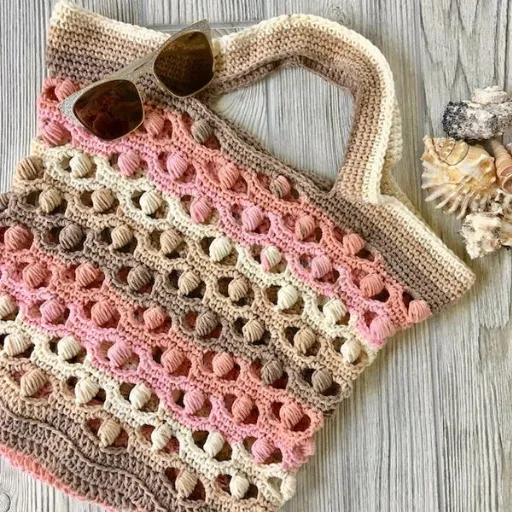
To care for your acrylic yarn creations, follow these simple steps:
1
Washing
Place your item in a washing machine and set it to a gentle cycle, using cold or lukewarm water. Use a mild detergent, avoiding bleach and harsh chemicals.
2
Drying
Allow it to air dry to keep the shape and texture of the piece, if okay. Use a dryer at a low level otherwise.
3
Ironing
Never place them directly on any acrylic-the high temperatures will naturally melt or distort the fabric. Should one have to use very mild heat and a cloth as a press block in between?
4
Storage
Place your creations in a cool, dry place, fold them carefully to avoid creases, and keep them out of direct sunlight to prevent fading.
Washing Tips to Maintain Quality
To keep my items in good shape, I always use mild detergents with cold water for washing. Never twist or wring the fabric; instead, gently press to drain excess water before air-drying or using a low-heat dryer setting.
Drying Methods to Prevent Damage
Whenever possible, it is best to air-dry your items to ensure they stay in top condition. Dry flat on a smooth, clean towel or use a drying rack, as stretching may occur when hanging. However, if air drying cannot be done, select the low heat setting on your dryer, as it may cause shrinkage if set to high heat and weaken the fibers. After drying, remove your items immediately to prevent wrinkles and damage from setting in. At the same time, avoid over-drying, which could compromise the longevity of your fabrics. Alongside dirt-resistant fabrication, drying with care will keep your work trendy for many years.
Storage Tips to Avoid Static and Dust Buildup
These fabrics would become static and attract dust if left lying around. Consistent storage should be provided, meaning articles should be stored in a cool, dry place away from direct sunlight; since temperatures and UV rays conversely work to degrade materials, this should be prevented entirely. For instance, they resort to breathable storage, such as cotton garment bags, instead of plastic bags, so that air can pass freely and reduce moisture accumulation, which ultimately could attract dust or mold. Static resistance can be reduced by placing an anti-static sheet or a couple of silica gel packets on top of it. Cleaning the storage area and vacuuming or dusting the shelving area prevents particles from settling, ensuring that the items remain fresh, clean, and safe to wear for an extended period.
Frequently Asked Questions (FAQs)
Reference Sources
These five professional and authoritative reference sources lend credence to your article on “what to crochet with acrylic yarn.” These are either academic or research papers that provide helpful information about crochet and acrylic yarn.
| Source Title | Description |
|---|---|
| APPLICATION OF ACRYLIC YARN AS A MEDIUM OF VISUAL EXPRESSION | The study examines the application of acrylic yarn for both artistic and practical purposes. |
| The Evolution of Crochet: Tools, Techniques, and Artistic Trends | This scholarly article discusses the history, tools, and materials of crochet, and may also explore regions where acrylic yarn is the preferred choice. |
| The Fine Art of Crochet: Innovative Works from 20 Contemporary Artists | The book explores the artistic and practical applications of crochet, with a particular focus on the use of acrylic yarn for its versatility and durability. |
| Handicrafts Role in the Development of the Contemporary Creative Economy | This research throws light on the place of crochet and various yarn types, including acrylic, in the creative economy and individual crafting practices. |
| Domestic Machine Knitting as Tactile Art | This review examines the tactile qualities of yarns, including acrylic, and their application in creative and functional projects. |








